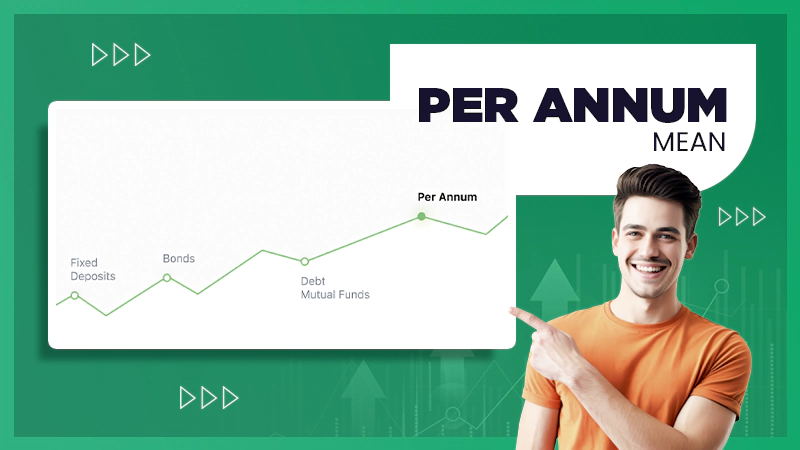The nature of the non-cash fringe benefit decides whether it can be taxable or non-taxable and who will be responsible for paying it.

Imagine enjoying a company vehicle, private health insurance, or educational assistance, all as a part of your salary package. These perks are known as the Benefit in Kind (BIK).
However, employers provide these bonuses in addition to your regular salary to elevate your standard of living and attract more valued employees.
Also, the government sees BIK as a form of income, which makes it subject to taxation. Even so, the tax value depends on various parameters.
So, if you are eager to know “what is benefit in kind?” and “how to make the most of it?”, read this article thoroughly to dive into its depth.
What is Benefit in Kind Meaning?
As a business owner or human resources supervisor, you may have come across the term “Benefit in Kind” (BIK) in the context of employee incentive payouts.
Benefits in kind are non-cash perks or amenities, also known as fringe benefits. An employer provides benefits in kind to its employees in addition to their ongoing salary or wages. For example, health insurance, childcare assistance, or company cars.
Understanding in kind payment is crucial for any venture owner, as it can help to improve employee contentment and job retention. Furthermore, BIK may have some vital tax implications for both the employer and the employee.
Without any ado, let’s begin with this term to comprehend, “What is benefit in kind?” more precisely.
How Does Benefit in Kind Function?
Benefits in kind are non-monetary compensation that employers provide to their employees to enhance job retention and improve living standards.
Along with regular add-ons like salary or bonuses that are intended for the employee’s financial well-being, benefits in kind are concentrated on upgrading their quality of life both inside and outside the organization.
Look at the table to understand the functionality of the benefit in kind even more accurately.
| Benefits in Kind Aspects | |
|---|---|
| Aspects | Functionality |
| Form of Settlement | Non-monetary benefits like a company car, health insurance, retirement plans, flexible working arrangements, or free meals. |
| Usage and Value | Particularized usage (Non-Business Travel Expenses). |
| Tax Impacts | Partially taxable. |
| Employee Attraction | Provides personal perks, status, and comfort. |
| Benefits to Employers | It might reduce tax implementation and be helpful at the time of overall payroll tax. |
Consequently, this is how the benefits in kind are utilized for the employee in various ways to maximize their conventional way of life.
How to Calculate Benefit in Kind Tax?
Estimating the benefits in kinds of taxation can sometimes be quite challenging. However, we have simplified the calculation process for you. And for that, check out the listed steps.
1. Specify the Value of the Benefits
- Usually, the taxation amount is equivalent to the market value of the benefit.
- Several benefits have a specific value. For instance, company cars, loans, or accommodations.
2. Apply the Taxable Percentage (if applicable)
- Benefits like company cars have a fixed applicable percentage imposed on factors that include CO₂ emissions.
- Loans provided by the employer may have assessed fees on the interest savings.
3. Sum-Up to Employee Taxable Income
- The employer is authorized to add the benefit value to the employee’s annual income for tax purposes.
4. Implement National Insurance, Social Security Contributions, or Income Tax
- National Insurance(NI) / Social Security Contribution
On certain benefits, the employee does not have to pay any income taxes. Whereas, the employer is eligible to pay for those BIK.
- Income Tax
Concerning the income tax law, the benefit value is evaluated at the employee’s marginal tax proportion.
5. Calculation Example: Personal Use of Company Car
- Car Market Price: $40,000
- BIK Rate (according to the emission): 20%
- BIK Value: $40,000 x 20% = $8,000
- Tax Due (If the employee tax rate is 40%):
$8000 x 40% = $3,200 in tax
Consequently, implementing the aforementioned formula will assist you in calculating your accurate BIK in no time.
6. Five Trustworthy Tools to Calculate Benefits in Kind Tax:
- Zelt Benefit in Kind Calculator
- Turn2us Benefits Calculator
- U.S. Department of Labor Lifetime Income Calculator
- OECD calculator of taxes and benefits
Thus, the aforementioned tools are reliable and trusted by various organizations. You can save a few of them for later use.
Four Most Common Types of Benefit in Kind
Based on the 2024 benefits in kind survey from the Society for Human Resource Management (SHRM), 88% of establishments now provide some form of financial assistance in health insurance reimbursement to their workforce, making it the most significant in kind payment.
In this regard, here’s a rundown of some common classifications of benefits in kind that will come with tax.
1. Health Assistance Coverage
One of the normative examples of benefits in kind is when the company offers health insurance coverage to its employees. This type of wellness coverage is highly credible and less expensive than the usual insurance outlets.
Because of this, many organizations found providing health insurance as a BIK a notably exciting and productive tactic to motivate and retain their essential workforce.
Business owners can potentially propose a comprehensive package that features the following:
- Meeting with a doctor or specialist without being on a waiting list.
- Private hospitals for healthcare and surgical treatments.
- Laboratory tests like X-rays or MRI scans.
- Telehealth options, and much more.
Thus, the aforementioned are a couple of benefits an employee can acquire in the BIK health insurance allowance.
2. Mental Health & Well-Being Initiative
In today’s hectic life, mental health has come out as a priority at the workplace. The average return on investment for mental health programs is $4 for each $1 spent.
According to the US Department of Health and Human Services, 71% of employees have shown at least one symptom of a mental health condition in 2021 at their workplace.
Therefore, many companies are taking a strong approach by granting the benefits mentioned below to their team members.
- Complete employee guidance with regular counseling sessions.
- Stress management workshops.
- Access to digital mental health apps and platforms.
Hence, it is important to maintain these offerings with strict office protocols to deliver a positive outcome to both (the employer and the employee).
3. Personal Use of Company Car
Personal Use of Company Car (PUCC) is a term that refers to the situation when an individual drives a company’s car for their personal use to acquire a non-cash fringe benefit (in addition to wages).
This is a taxable BIK, where an organization generally includes the value of leasing the vehicle for personal reasons in the employee’s salary and payroll taxes. Whereas, if the usage is strictly for the company work, then it is treated differently.
Check out the following considerations for personal use of a company car.
- Travel to and from work.
- Running a personal expedition.
- Utilizing for vacation or weekend use.
- Used by a spouse or other family member.
In essence, this is how the offering sweetens an individual’s comfort with some applicable charges.
4. Employee Education Assistance Program
A multitude of organization owners enforce the Employee Education Assistance Program, also identified as the Tuition Reimbursement Program.
By this, a company funds its employee education expenses, for example, books, tuition, fees for courses, certifications, or further degrees to recruit highly competent candidates.
Similarly, Harvard Business Review, sponsored by Strategic Education, Inc., also pointed out that learning and development are now one of the top concerns for job seekers, which makes tuition assistance a growing trend for good reasons.
Moving ahead to the five vital benefits of the Employee Education Assistance Program, listed below.
- Boosts the staff retention rate.
- Enhances candidate recruitment procedures.
- Notable saving on tax.
- Improve personal skills.
- Maximize employee satisfaction and engagement.
Thus, offering the BIK will surely furnish a positive outcome to the organization owner along with the job applicant.
How to Report Benefits in Kind?
Taxable benefits in kind that have been provided to both employees and non-employees, including partners or independent vendors, have distinct tax liability structures.
- Employees: If an employee is accepting the in kind benefits, they are subject to employment taxes. They are generally reported on the employee’s W-2 form (a United States federal wages and tax statement, which an employer must hand out to every single employee and also send to the Social Security Administration (SSA) annually) along with their regular wages.
- Non-Employees: If the beneficiary of a taxable benefit in kind is not an employee, it will not be considered under the employment taxes. However, the recipient has to report the BIK tax on Form 1099-NEC, Partner’s Share of Income, Deductions, Credits, etc.
In a nutshell, any person who accepts the standard BIK is subject to the tax liability that is attached to their reasonable laws and regulations.
Different Tax Dependencies on Benefits in Kind
The non-cash fringe benefit is often the subject of taxation, as they are categorized as another component of an employee’s overall compensation arrangement.
However, the specific taxation can vary based on the type of benefit, local tax laws, and the origin of the organization.
Look at the overview of how benefit in kind are commonly taxed.
1. Type of Taxable Benefits in Kind
Common examples of benefit in kind consist of the following:
- Company Cars: Tax on company cars is based on the estimated market value of the vehicle, with additions for fuel consumption, CO₂ emissions, and whether the car is used for personal activities.
- Moving Expenditures: Compensation for shifting expenses is generally considered a taxable in-kind payment.
- Educational Aide: Employee Education Assistance Programs are often considered taxable benefits, through specific terms and conditions of the corporation and the country’s law.
- Health Finance Protection: The amount of tax on the premiums of your health insurance will strictly be contingent on your income bracket and tax laws, and regulations.
- Meal Allowances: If an employer provides a meal allowance or covers the meal expense of an employee, it will be taken under some kinds of taxation.
Although the government hasn’t mentioned any such percentage of benefit in kind tax. Each company follows the general laws and modifies them to present an effective BIK for itself and its employees.
2. Types of Non-Taxable Benefits in Kind
As stated in IRS Publication 15-B, non-taxable in kind benefits consist of the listed characteristics:
- Work-Related Advantages:
- Employer lends a cell phone or another gadget (one to each).
- Work-related training program.
- Specific uniforms are required for work.
- Well-Being and Health Benefits:
- Health screenings or regular medical checkups.
- Wellness Workshops.
- Eye tests (if required for screen work)
- Meals and Entertainment:
- Free workplace canteen (must be for every employee).
- Small benefits, such as occasional gifts and team entertainment.
- Further Exception:
- Refreshments are provided by the employer during working hours.
- Long service awards (subject to terms and conditions).
- Interest-free loans on salary.
Finally, the perks mentioned above are some general benefits in kind that can be taxable or not. Moreover, as the tax is playing an essential role in BIK, you should be informed about the details related to tax as well. For example, tax laws, tax identification numbers, and more.
What is Monetary Compensation? How is it Different From Benefits in Kind?
Monetary compensation refers to the direct cash payment (or its equivalent) that an employer provides to employees in exchange for their services, or to compensate for loss and damage. These payments are commonly made on a daily, weekly, or monthly basis.
However, hourly or non-salaried candidates typically receive this allowance, which is subject to labor restrictions such as overtime pay, bonuses, commissions, pensions, and more.
Moving further, let’s examine the key difference between monetary compensation and benefits in kind, highlighted below.
Key Difference Between Monetary Compensation and Benefit In Kind
At first glance, monetary compensation and benefits in kind might look similar, but they both encompass entirely distinct attributes.
Refer to the table presented below to learn more about it.
| Difference Between Monetary Compensation and Benefit In Kind | ||
|---|---|---|
| Attributes | Monetary Compensation | Benefit In Kind |
| Definition | It is a cash payment that an employer provides to an employee in exchange for their work and service. | Benefit in kind refers to non-cash perks that an employer hands over to an employee as an extra add-on to their regular salary. |
| Purpose | The intent is to strengthen employees’ financial assets and enhance their job retention. | In an attempt to upgrade employees’ standard of living. |
| Examples | Salary, stock options, sales commission, and the rest. | Loans, a company car, health insurance, and many more. |
| Tax Implications | Complete taxable. | Often taxable. |
| Who gets it | Employees or those who have faced any kind of damage or loss. | Regular employees. |
Therefore, after going through this table, we are sure that now you can state a clear difference between the respective terms.
Conclusion
To wrap it up! We can say benefits in kind are more than just workplace perks, as they assist in upgrading financial well-being, work-life balance, and job satisfaction. These BIK can make a big difference in your lifestyle, however, it is important to understand the tax implications to make the most out of them.
By staying informed about the latest policies, both employers and employees can turn BIK into a profitable exchange. So, are you making full use of your benefits in kind? Start exploring now, and unlock its maximum potential effortlessly!
- What is Benefit in Kind Meaning?
- How Does Benefit in Kind Function?
- How to Calculate Benefit in Kind Tax?
- Four Most Common Types of Benefit in Kind
- How to Report Benefits in Kind?
- Different Tax Dependencies on Benefits in Kind
- What is Monetary Compensation? How is it Different From Benefits in Kind?
- Conclusion








